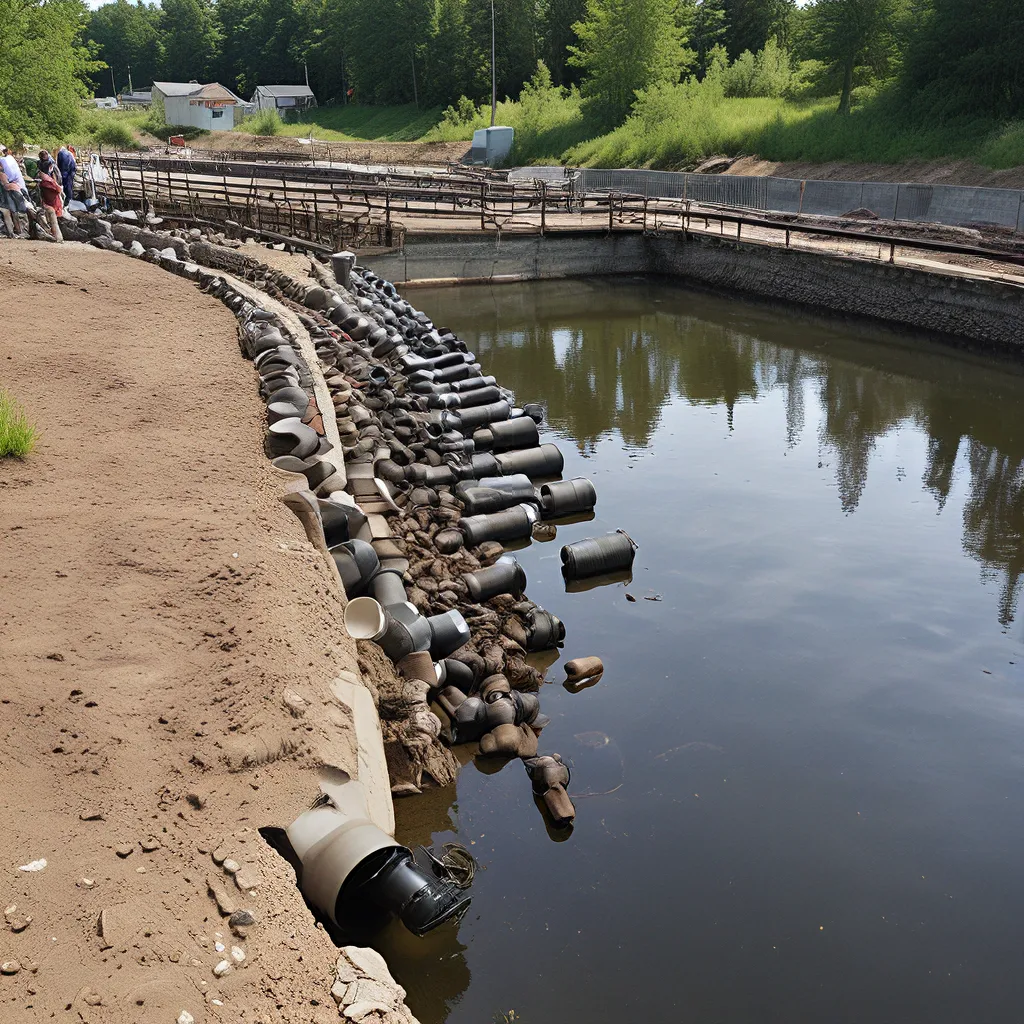
Diving into the Depths of Wastewater Treatment
As a responsible citizen, I’ve always been fascinated by the intricate world of wastewater treatment. It’s a process that often goes unnoticed, yet it plays a crucial role in maintaining the health and well-being of our communities. Recently, I had the opportunity to delve deeper into this topic, and what I discovered was both eye-opening and inspiring.
Wastewater treatment is not just about flushing our toilets and washing our dishes – it’s a complex system that requires careful planning, state-of-the-art technology, and a deep understanding of the environmental impact. At the heart of this system are the dedicated professionals who work tirelessly to ensure that our water resources are clean, safe, and sustainable.
But what really struck me was the importance of public engagement in the wastewater treatment process. It’s not just about the experts – it’s about all of us coming together to understand, appreciate, and actively participate in the stewardship of our local water resources.
The Importance of Community Engagement
One of the key insights I gained from my research was the crucial role that community engagement plays in the success of wastewater treatment initiatives. The Long Island Sound Study is a prime example of this, with their comprehensive Comprehensive Conservation and Management Plan (CCMP) that focuses on four major themes: Clean Waters and Healthy Watersheds, Thriving Habitats and Abundant Wildlife, Sustainable and Resilient Communities, and Sound Science and Inclusive Management.
What I found particularly inspiring was the implementation actions developed by the Long Island Sound Study work groups to carry out the strategies, objectives, and outcomes of the CCMP. These actions are designed to engage the community, foster stewardship, and raise awareness about the importance of wastewater treatment and water conservation.
Empowering Communities through Education and Awareness
One of the most effective ways to promote public engagement in wastewater treatment is through education and awareness-raising initiatives. This could involve hosting community events, developing educational materials, and partnering with local schools and organizations to ensure that everyone in the community understands the importance of this vital service.
As the Water Sensitive Cities report highlights, effective community engagement in the water sector can lead to increased trust, cooperation, and support from the public. When people understand the importance of wastewater treatment and feel empowered to contribute to its success, they’re more likely to become active stewards of their local water resources.
The Role of Innovative Financing and Partnerships
Of course, funding and resources are crucial to the success of any wastewater treatment initiative. This is where the work of organizations like the Syracuse University Environmental Finance Center (SU-EFC) comes into play.
The SU-EFC is dedicated to building capacity for government officials, nonprofits, and private sectors to drive positive change in environmental infrastructure and quality of life. They offer a wealth of resources, including a searchable database of grants, helpful guides, and a range of publications that can help communities access the funding and support they need to implement effective wastewater treatment solutions.
Navigating the Complexities of Wastewater Treatment
As I delved deeper into this topic, I quickly realized that wastewater treatment is not a one-size-fits-all solution. Each community has its own unique challenges, resources, and priorities, and the key to success is adapting and tailoring the approach to meet the specific needs of the local area.
This is where the role of sound science and inclusive management comes into play. Experts in the field are continuously researching and developing new technologies and strategies to improve the efficiency and effectiveness of wastewater treatment. By incorporating the latest scientific insights and collaborating with a diverse range of stakeholders, communities can create customized solutions that address their specific needs and challenges.
The Future of Wastewater Treatment: Embracing Innovation and Sustainability
As I wrap up my exploration of this topic, I can’t help but feel optimistic about the future of wastewater treatment. The industry is rapidly evolving, with new technologies and approaches emerging all the time. From advanced water reuse and recycling systems to nature-based solutions that harness the power of natural ecosystems, the possibilities for sustainable and innovative wastewater treatment are truly exciting.
But perhaps the most important factor in this equation is the active participation and stewardship of the community. When people understand the importance of wastewater treatment and feel empowered to contribute to its success, the possibilities are endless.
So, the next time you flush your toilet or turn on the tap, I encourage you to think about the intricate system that’s working behind the scenes to keep our water clean and our communities thriving. And consider how you can get involved in promoting public engagement and awareness around this vital issue. After all, we’re all in this together, and the future of our water resources depends on it.